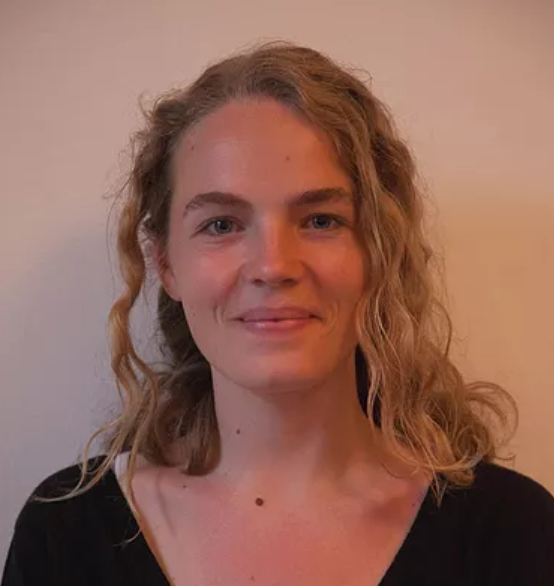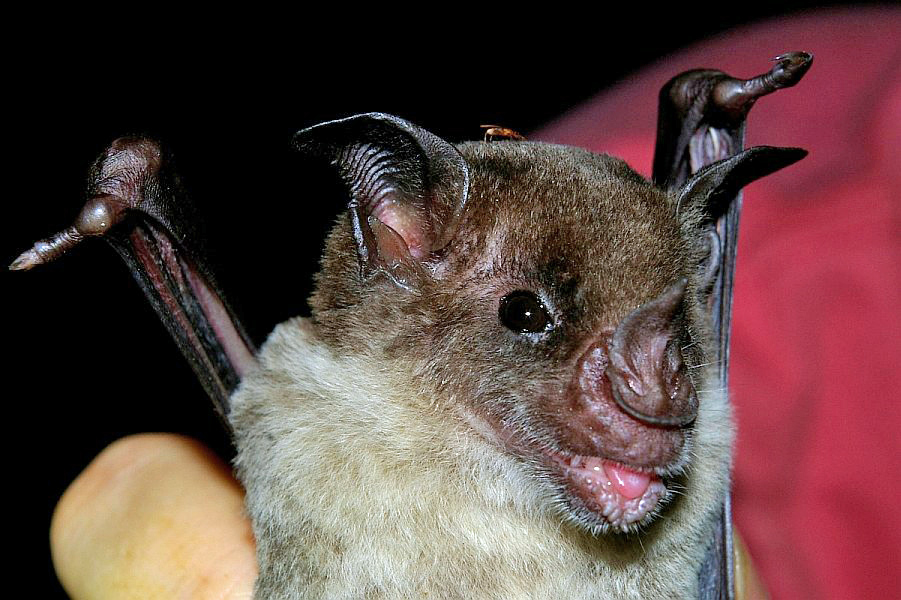1. What was the main question in your dissertation?
In my dissertation, I investigated the vocal learning capacity of the pale spear-nosed bat (see picture above).
2. Can you explain the (theoretical) background a bit more?

3. Why is it important to answer this question?
Studying vocal learning in other mammalian species is important to understand the evolutionary basis of the human capacity for speech acquisition. So far most investigative efforts were focused on studying songbirds (especially zebra finches). Mammals have received far less attention.
4. Can you tell us about one particular project?
The key experiment of my dissertation was designed to discover whether pale spear-nosed bats can learn to lower the pitch of their calls. For that, the bats were trained in isolation in little “bat recording studios”. They had to move towards a light-barrier (ed. like a laser beam), which they interrupted by putting their wings, nose, or feet in the light beam. After that, they were presented with the playback of their own calls. In this playback, the pitch of their calls was lower. The bats were rewarded if they then copied the call with this lower pitch. We found that all tested bats lowered the pitch of their calls within 30 days of training and in a follow-up experiment, we showed that at least one of them did this regardless of whether it received a reward. The results demonstrate that the pale spear-nosed bat is capable of vocal learning.
5. What was your most interesting/ important finding?
I published five chapters in my thesis, which are quite diverse and include an opinion paper, two behavioural experimental studies (as the study described above), but also a vocal repertoire description and a cross-species comparison of the hearing capacity of tropical bat species. So it is hard to say which finding is the most important or interesting, as that depends which field you are in and which question you are trying to answer. However, the finding that received most attention in the press is the demonstration of the vocal learning capacity of the pale spear-nosed bat under controlled laboratory conditions (described above).
6. What are the consequences/ implications of this finding? How does this push science or society forward?
This finding is interesting in itself and allows follow-up studies investigating the vocal learning capacities of other bat species. It also allows the within and across species comparison of the vocal learning capacityin different species (mammals and birds). This way it paves the way to eventually being able to trace the evolution and biological basis of speech acquisition in humans.
7. What do you want to do next?
After I finished my PhD, I started working for a charitable nonprofit foundation concerned with the support of financially disadvantaged children worldwide. We promote and enable access to basic health care as well as education and training. On the side, I still work on the open projects from my PhD and enjoy science, at least for a while, from a distance.
Read more
– Link to dissertation
Header picture Phyllostomus discolor: Karin Schneeberger, recoloured by WolfmanSF, via Wikimedia Commons
Interviewer: Merel Wolf
Editor: Julia Egger
Dutch translation: Eva Poort
Germantranslation: Natalia Levshina
Final editing: Merel Wolf

